Fossil Fuels
Almost all living things contain compounds of hydrogen and carbon.
We call these compounds hydrocarbons. The major
sources of hydrocarbons are CRUDE OIL, Natural gas and
Coal- the fossil fuel family. The hydrocarbons in crude oil are
not only important fuels, they are also the starting point of many other new
chemicals products, for examples PLASTICS. Fossil
Fuels - Coal, Crude Oil and Natural Gas Out of these three fossil fuels, coal
is the odd one out, as it not a true hydrocarbon. Nevertheless it does
contain hydrogen and carbon along with other types of atoms, for example oxygen,
in some of its structure. How were
they formed? Fossil fuels were formed from dead plants and animals. All the energy that is stored in fossil fuels, as chemical energy,
originally came from the Sun. Coal About 300
million years ago, the Earth surface was overrun with plant
life. Plants died and fell into swampy
water and were covered by mud,
which stopped them from rotting. As the mud piled up, it compressed the plants.
Hydrocarbons
- why are they so important?
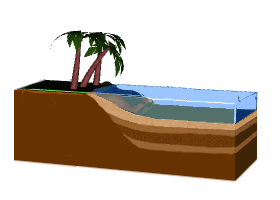
After millions of years of pressure the mud became rock and the plants turned into coal.
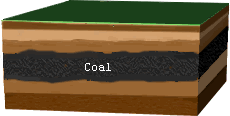
As coal is found deep underground, to reach it, miners dig deep shafts and tunnels. It is estimated that there is enough coal to last us 300 years. Fossils of plants are sometimes found in layers of coal.
Crude Oil and Natural Gas
Crude oil and natural gas were formed under similar circumstances as coal. Many parts of the Earth were under water which contained many animals. These animals died and were immediately covered by sediments on the seabed. The dead sea creatures were buried under many layers of mud and sand. They did not decay.
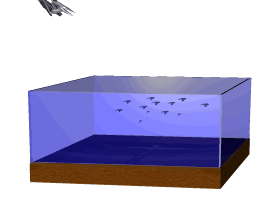
After many millions of years of pressure and heat (90°C to 120°C) this process turned the mud and sand into rock and dead animals into crude oil and natural gas. These two are found very deep underground between layers of impermeable rock. These rocks prevents the oil from seeping through.
Natural gas is found in pockets on top of the crude oil under a layer of non-porous rock. The gas is a mixture of compounds made up of hydrogen and carbon only. These are small molecules with a low molecular mass.
This gas is used on a large scale as a fuel. It is also used for the manufacture of more complex organic substances.
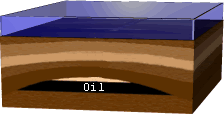
Oil is usually found approximately 2 to 3 miles beneath the ground. It is trapped in rocks as shown on the diagram opposite. To get at the oil, a hole is bored, either in the ground or sea bed, using giant drills. The drill is hung from a giant metal frame, like the one on the left or from a drilling platform in the case of over water, like the one on the right. |
|
|
Once the oil is discovered, it is usually under pressure and comes up by it self. The next step is that the hole is lined with steel pipes. Then the oil is pumped through them. It is carried ashore, to an oil refinery, in pipes that run along the land or sea bed. |
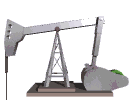 |
Coal, natural gas and crude oil are fossil fuels. They are an extremely valuable resource and must be used carefully and efficiently because we have a very limited supply of them and the fact that they are non-renewable resources.
Tags:Coal, Natural gas, Crude oil, Fossil fuels, Hydrocarbons, Hydrocarbon in natural gas, Fossil fuels gas, oil coal and natural gas, the carbon in coal oil and natural gas comes from, how are coal oil and natural gas formed, coal oil natural gas, is petroleum a fossil fuel, fossil fuels generate electricity, how is fossil fuel made, what are fossil fuels made of, how are fossil fuels made, what are fossil fuels made of, what is fossil fuels made of, fossil fuel process, how much energy does fossil fuels produce